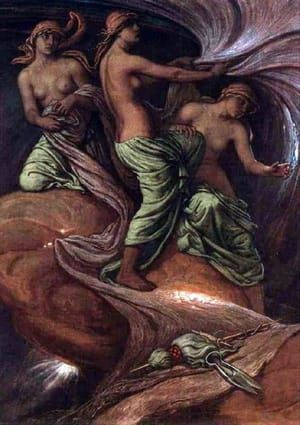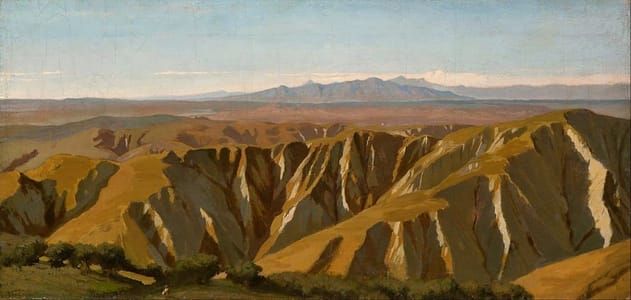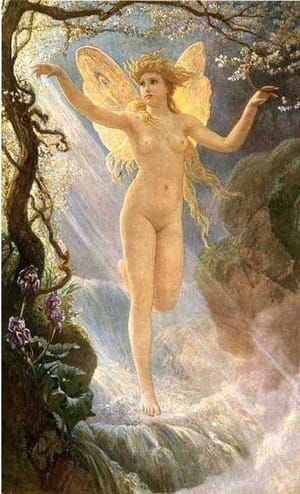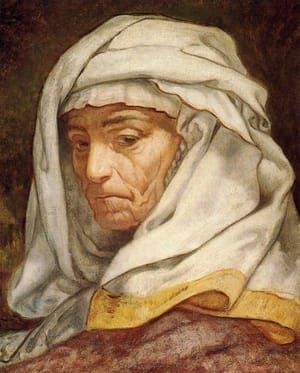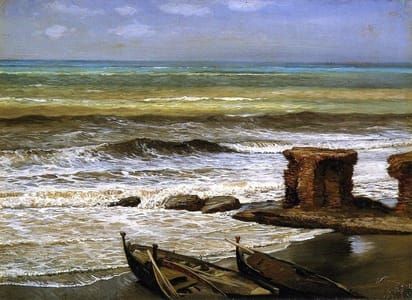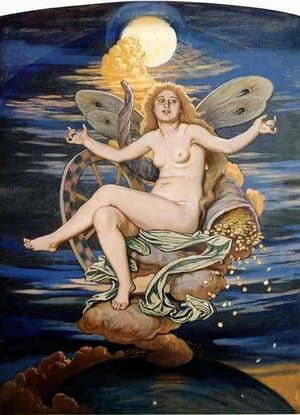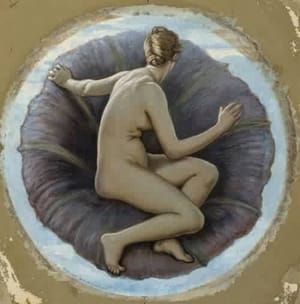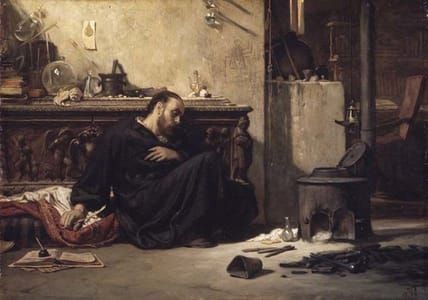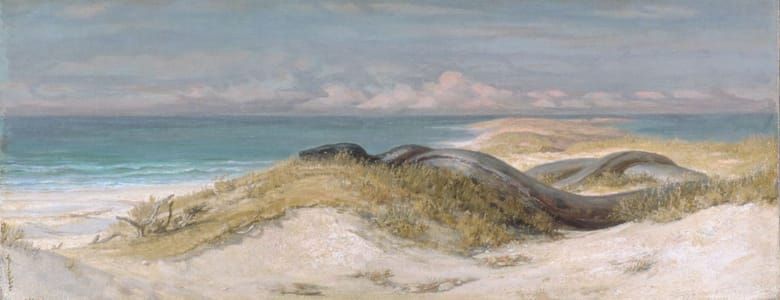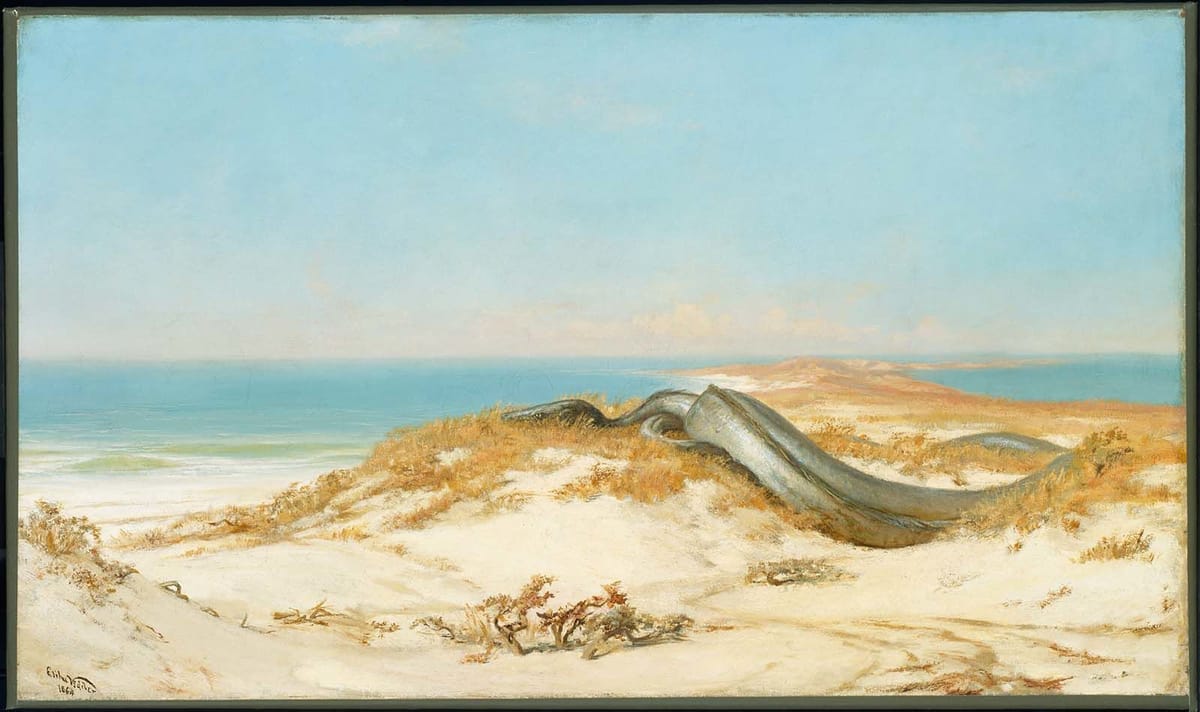

The Lair of the Sea Serpent, 1864
Elihu Vedder
In 1864 Vedder completed a large painting of a huge mythical creature burrowing into a hillock on a sandy shore. Now in the Museum of Fine Arts, Boston, that painting was based on a sketch that Vedder reworked 35 years later to create [a second version]. The sea serpent’s immense size, thick, coiled body, and incongruous placement in a tranquil setting suggest the influence on Vedder of nightmarish demons such as those portrayed by Gustave Doré and Francisco de Goya, especially in the latter’s aquatints published as Los Caprichos in 1799.
[https://www.metmuseum.org/art/collection/search/13065]
The 1899 version of the sea serpent subject differs only slightly from Vedder's 1864 one, which he painted after a prolonged stay in Florence and his first exposure to European painting. Both versions of the work reflect his early style of landscape painting. Influenced by the Macchiaioli painters, he emulated their muted palette and the way they wove small spots and splashes of color into a uniform fabric. Vedder, however, added his own visionary element, incongruously placing a serpent in a tranquil scene. The picture is one of the first in a long series of mystical themes that characterized his painting….
One critic described it as depicting:
A huge monster, motionless, torpid, yet self-conscious, overlooking the fair expanse of nature like an incarnate evil, waiting and defiant in its very calm…. We take this picture to be a symbol of the serene purity of the soul threatened or subjected to a horrible evil. The serpent lying there with its sleepless eye is like an affront to faith, to virtue, to love. It is the evil of a man's life… To be haunted by such an image, what suffering! To express it, what relief! We fancy Mr. Vedder must have felt as if a nightmare had been dissipated when he completed that picture.
[From American Paintings: A Catalogue of the Collection of the Metropolitan Museum of Art, Volumes 1-2, found on Google Books.}
Against a quiet stretch of distant sea and sandy dunes the serpent glides, monstrous and ominous, shining as in some vivid dream. This combination, a desolate landscape depicted with literal exactitude and united with a sinister or strange image to create an atmosphere of isolation and fantasy, gives a singular force to much of his work[, with this painting exemplifying' his taste for the exotic.
[https://www.jstor.org/stable/23207929?seq=1#page_scan_tab_contents]
Uploaded on Feb 26, 2018 by Suzan Hamer
Elihu Vedder
artistArthur
coming soon
